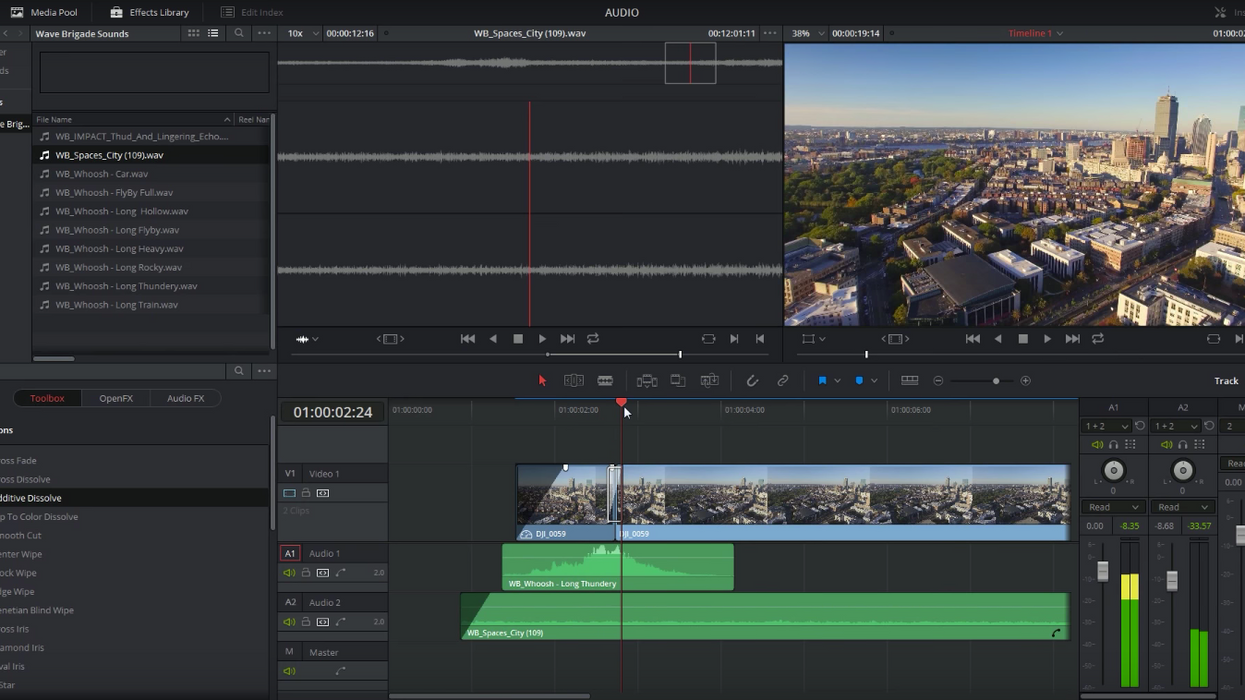How Many Layers Does It Take to Make Your Audio Dynamic? (Hint: A Lot)
According to world-renown editor and sound designer Walter Murch, editing is a lot like cooking.

And if you know anything about cooking, which I don't, you know that it's all about layering flavors so your food has dimension. It's a similar concept within the context of sound design — you have to choose sound effects that pair well with each other, as well as with your video, and layer them to create depth. To show you a couple of methods you could use to do this, here are tutorials by self-professed video nerds Casey Faris and Dan Bernard.
First up is Casey's tutorial, in which he shows you how to create dimension to a transition by layering sound effects.
Next is Dan's tutorial, in which he layers a bunch of sound effects to create a believable punch sound from scratch.
When you're first starting out, it's typical to look at your timeline, notice areas where you're going to need a sound effect, like a whoosh, a door knock, or a footstep, add that sound effect and call it good without ever considering layering additional sounds to create more dimension. But if you're racking your brain trying to figure out what's missing in your audio — why it sounds empty — then that's probably the issue.
And Casey and Dan's tutorials only show you the tip of the iceberg. Just look at editor Vashi Nedomansky's timeline for The Grind — the sheer number of layered audio tracks in this feature films is staggering — and typical.

Don't let that behemoth of a timeline scare you, though. How much work you're going to put into your project depends on the details of the project itself, like runtime, location recording, even genre (an action film will most likely require more sound effects than a drama). You don't have to be a pro right off the bat; even knowing that these sound design techniques exist is a huge step in honing your craft. (The next step is practicing!)
Speaking of practicing, you might want to check out Casey and Dan's site Wave Brigade. They have plenty of royalty-free packs that you can purchase, but they also offer a bunch of them for free if you want to start playing around with sound design. As it turns out, these guys and I live in the same city and we were able to meet up and talk about how they record/digitally design all of their sound effects themselves. (Go locals!)
Source: Casey Faris











